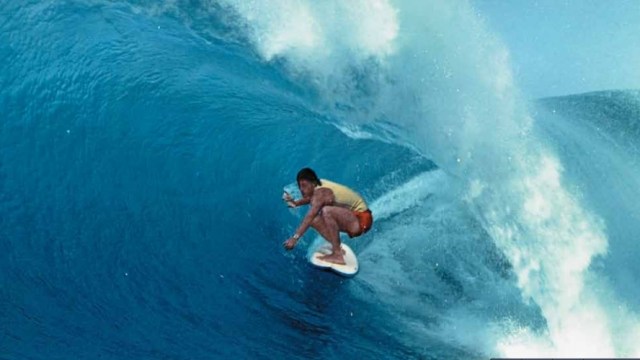Riding the Wave of Life: An Interview with Shaun Tomson

World champion surfer and best-selling author Shaun Tomson describes a big wave wipeout as “a dark cauldron of explosive force trying to rip off your limbs and force the air from your lungs.”
So what would motivate someone to take such a risk?
Like all successful pursuits in life, Tomson tells Big Think, surfing comes down to passion, or, to put it another way, “a desire to challenge yourself to the outer edges of your abilities.” A shared passion to embrace this challenge is what connected a community of surfers who eventually grew their lifestyle into a billion dollar industry.
And yet, passion alone won’t cut it. If you’re facing down a 25 foot wave, Tomson tells us, you need to imprison “the butterfly of fear in a dark little box in your brain.”
It turns out that the lessons of professional surfing serve as a highly relevant guide to tackling everyday challenges. That is what Tomson details in his book The Code: The Power of ‘I Will’, a collection of personal stories that illustrate a personal and professional code that Tomson says he used to reach both “the heights of professional success” as well as “navigate the depths of profound grief.”
Big Think had the opportunity to interview Tomson about embracing his passion and facing his fears, and that interview is printed below.
Big Think: You write about how when you started out in 1975 there was no professional tour for surfers. And yet, you were ultimately able to turn a lifestyle into a living, and, as you write, turn “what if” into “what is.” What was the key to making that dream come true?
Shaun Tomson: Passion was the fuel that powered my journey from vision to reality, from what if to what is.
All successful pursuits in life, personal or business, have passion as the essential ingredient. As young surfers in 1975 the key to achieving our vision was our collective passion for this shared dream. It came to pass via consistent commitment, and of course through shared passion — what we surfers call stoke.
BT: Can you walk us through your mental process of how you think through an intimidating wave?
ST: As I float in the ocean atop my surfboard in the lineup – the area where you wait for and anticipate catching waves – I see a grouping of waves approach from about 300 yards out, beginning as a series of swells or a “set.” Each individual wave starts to lift up and steepen as it encounters the drag of the coral beneath the surface. I choose my wave, swing my board towards shore, and paddle hard. Taking 2 extra strokes as the wave rears up vertically, I paddle over the edge of the precipice with absolute commitment.
It is a swift, simple and instinctual process molded by practice, fitness and a desire to challenge yourself to the outer edges of your abilities. Confidence – both in yourself and your equipment – imprisons the butterfly of fear in a dark little box in your brain.
BT: All athletes fail. When surfers fail, they fail big – wiping out on enormous waves. The impact is devastating. What’s the key to recovering – not so much physically as mentally?
ST: Big wave wipeouts can be terrifying – the initial impact of a 25 foot wave is sudden and violent, a concrete-hard impact that drives you deep quickly and suddenly, down into an area of hellish turbulence and agitation, a dark cauldron of explosive force trying to rip off your limbs and force the air from your lungs. I was once hit so hard at Waimea Bay in Hawaii on my first wave during the final of a surfing contest that I lost feeling in my legs and thought I had broken my back. I was swept in to the beach and met up with my board in the rip tide. I was 19 years old, a long way from home and I lay there like a broken jellyfish, deciding what to do. The shore was close and the impact zone, the place where the waves break, was 300 yards away. What to do, what to do? I knew that only way to get another wave would be if I paddled back out and faced my fears.
I swung my board toward to horizon, paddled back out and got 2 more rides. Though I placed last in the final it was my greatest victory, an experience I have carried with me into every challenging situation. Always paddle back out, because it is the only way you’ll ever get that next wave.
Photograph by Dan Merkel.





